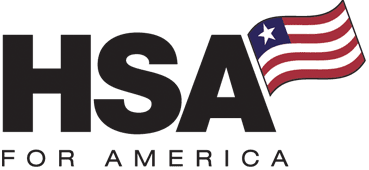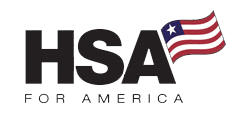An HSA benefit can significantly enhance employee financial wellness, yet many workers fail to take full advantage of it.

Studies show that 51% of private industry workers participating in medical care plans were enrolled in HDHPs.
However, too many workers don’t contribute meaningfully to their health savings accounts (HSAs). This means they are missing out on what’s arguably the most powerful tax-advantaged savings vehicle available in the tax code.
When workers enroll in a HDHP but don’t have money in their HSAs, they miss out on a lot.
First, they must pay more in income and payroll taxes. That only benefits the government. Not the worker.
Second, they face higher deductibles under the HDHP than they would otherwise pay in a conventional health plan – without the financial cushion that the HSA is designed to provide.
Eliminate Barriers to Care
The combination of higher deductibles and lack of savings creates a higher risk that workers will skip the medical care they need, or skimp on medications because they can’t afford their deductibles, copays, and prescription drug costs.
This has negative downstream effects on healthcare access and the overall well-being of employees and their families. It also creates significant costs for employers.
For small businesses, offering an HSA benefit can lead to greater employee loyalty, engagement, and improved health outcomes. But it’s not enough for employers to simply offer a high-deductible health plan and hope employees participate. Instead, employers need to be proactive and put effort into ensuring employees understand their benefits.
Compare Pricing on the Best Insurance Plans Available
The Risks of Underutilized HSA Benefits
Without adequate HSA funding, employees face significant financial barriers to care.
Studies have shown that higher deductibles and other out-of-pocket costs can lead to individuals delaying or forgoing necessary treatment, resulting in poor disease management and costly emergency interventions.
Helping Patients With Chronic Conditions Overcome Challenges of High-Deductible Health Plans: Mixed Methods Study. Here’s another one in case you can use it.
However, when workers have money in their HSAs, that ready source of tax-free cash offsets these drawbacks.
By providing a dedicated, tax-advantaged account for medical expenses in the form of an HSA, employers empower workers to seek care without fear of excessive out-of-pocket costs.
Additionally, HSAs offer flexibility: HSAs don’t have narrow networks of authorized healthcare providers to worry about. Even if the employee is enrolled in an HMO, workers are free to use their HSA money with any provider they like, in or out of their plan’s network.
How an HSA Benefit Enhances Employee Loyalty
Offering an HDHP in conjunction with an HSA also helps employees enhance their employer value proposition.
When workers understand and appreciate the value of their HSA benefits—especially when employers contribute—it strengthens workplace morale and loyalty.
Best Practices for Employers Offering an HSA Benefit
Employers can take several strategic steps to make HSAs a more effective and attractive benefit for their workforce.
1. Contribute To HSAs On Your Workers’ Behalf
Employer contributions to Health Savings Accounts (HSAs) are a powerful tool for reducing payroll taxes: Any employee contributions and any worker contributions via salary reduction are exempt from payroll taxes, providing immediate tax savings for both parties.
Plus, even modest contributions can make a significant difference. A few thousand dollars in matching contributions, for example, can help employees build a financial cushion for medical expenses.
Employer HSA contributions are also a great differentiator vs. other competing employers. But for that differentiator effect to be effective, your employees need to understand the benefit and its value.
Ways to Structure Employer HSA Contributions:
There are several strategic ways to structure employer HSA contributions to maximize engagement and utilization: Base contributions, matching contributions, wellness incentives, front-loading contributions.
Base Contributions
Providing a fixed contribution to all employees enrolled in an HDHP ensures that everyone receives some level of support for medical costs.
This approach makes HDHPs more attractive, particularly for employees who may be hesitant about the higher deductible. A flat contribution can also serve as an incentive for employees to switch to an HDHP, especially when comparing it to traditional health plans.
Matching Contributions
Encouraging employees to contribute to their own HSAs through an employer matching program fosters active participation.
Employers can match a percentage of employee contributions up to a set limit, similar to 401(k) matching. This approach promotes savings discipline and ensures that employees are invested in managing their healthcare expenses proactively.
A typical strategy might involve matching 50% of employee contributions up to a maximum amount, incentivizing employees to maximize their contributions.
Wellness Incentives
Tying HSA contributions to wellness activities can encourage employees to engage in preventive care and healthy behaviors.
Employers can reward participation in wellness programs, such as completing biometric screenings, annual physicals, smoking cessation programs, or fitness challenges. These additional contributions not only boost HSA balances but also contribute to lower healthcare costs in the long run by promoting healthier lifestyles.
Front-Loading Contributions
Rather than distributing employer contributions evenly across pay periods, some businesses opt to provide a lump sum at the beginning of the year or in quarterly installments.
This approach helps employees cover early-year medical expenses, such as deductibles and prescriptions, without waiting to accumulate funds over time. A front-loaded contribution can be particularly beneficial for employees who face large medical expenses at the start of the year, reducing financial stress and ensuring they have funds available when needed.
Tiered Contributions Based on Tenure or Coverage Level
Another approach is to structure contributions based on employee tenure or their level of health plan coverage.
Employers may offer higher contributions to employees who have been with the company longer or provide different contribution levels for individual vs. family coverage. This method rewards long-term employees while ensuring those with greater healthcare needs—such as families—receive additional support.
Why Employer HSA Contributions Matter
Employer-funded HSAs can make HDHPs more attractive, improve employee satisfaction, and contribute to overall financial wellness.
Employees with employer contributions are more likely to use their HSAs for both short-term medical expenses and long-term savings, including retirement healthcare costs. Additionally, employer contributions are tax-deductible, reducing the company’s taxable income while also providing tax-free benefits to employees.
By strategically structuring HSA contributions, employers can maximize engagement, improve health outcomes, and create a more competitive benefits package that supports their workforce’s well-being.
2. Educate Employees on the Benefits of HSAs
Despite the powerful advantages of HSAs in tax savings and promoting healthcare access, they are vastly underutilized.
In fact, about one in three people enrolled in an HDHP don’t even have an HSA at all.
This highlights the need for better education and engagement strategies on the part of health plan sponsors.
Employers should make a concerted effort to educate employees about their benefits. The more employees understand how HSAs work and how powerful the benefit is, the more they’ll contribute.
Key topics to cover include:
- The triple tax advantage: Contributions are tax-deductible, growth is tax-deferred as long as the money remains in the HSA, and withdrawals for qualified expenses are also tax-free.
- HSAs as a retirement savings tool: After age 65, HSA funds can be used for non-medical expenses without penalty (though subject to income tax).
- The ability to carry over funds indefinitely: Unlike FSAs, HSAs do not have a “use it or lose it” rule.
- Investment options: Many HSAs offer the ability to invest contributions, further enhancing long-term savings potential.
3. Facilitate Pre-Tax Payroll Contributions
Allowing employees to contribute to their HSAs through payroll deductions provides tax savings and simplifies account funding.
Employers should highlight how pre-tax contributions reduce taxable income and make regular saving easier. Consider implementing a Section 125 cafeteria plan to facilitate payroll deductions and enhance tax efficiency.
4. Cover Preventive Medications Before the Deductible
The Affordable Care Act requires HDHPs to cover certain preventive services pre-deductible, but it historically excluded medications used for ongoing condition management.
IRS guidance issued in 2019 expanded the list of eligible pre-deductible services, allowing HDHPs to cover high-value treatments for chronic conditions like diabetes and heart disease.
Employers should ensure that their HDHP plans take full advantage of these provisions. Covering essential medications and treatments, pre-deductible can improve adherence and prevent costly health complications down the road.
5. Cover HSA Account Fees
HSA account fees can be a barrier to participation, especially for employees with low balances.
Cover these fees for your employees. It’s just a few dollars per month for you. But it removes one more obstacle to full participation and often leads to a higher contribution rate – especially among lower-wage workers.
6. Leverage Technology
Digital tools and platforms make HSA management easier than ever for employees.
Most HSA custodians provide easy-to-use mobile apps for expense tracking, online portals for account management, and integration with other benefits systems for a seamless user experience.
Compare Pricing on the Best HealthShare Plans Available
Other Ways to Encourage Employee HSA Participation
Employers can further boost HSA participation through creative incentives, such as:
- Matching Contributions: Similar to 401(k) programs, match a percentage of employee HSA contributions to encourage saving.
- Default Elections: Set up automatic HSA contributions for employees unless they opt out. Inertia is your friend. And if an employee has a medical emergency or needs care, they’ll be glad you did. Especially if you’ve been matching contributions all along.
- Gamification: Create challenges or competitions with rewards for employees who reach specific HSA contribution milestones.
- Tiered Employer Contributions: Increase the company’s HSA contributions as employees contribute more to their accounts. For example, match 50% of the first 2% of the employee’s compensation they contribute, and 100% of employee contributions above that, until the annual contribution limit has been reached.
- Health Incentives: Offer additional contributions for completing health-related activities, such as annual check-ups or wellness programs.
- One-Time Bonuses: Pay a bonus to employees who maximize their annual HSA contributions, or who contribute more than a certain percentage of their pay.
- Peer Testimonials: Showcase success stories of employees who have benefited from robust HSA savings.
HSA Benefit Conclusion
As a small business owner, you have a powerful tool at your disposal with Health Savings Accounts (HSAs).
The key to maximizing this opportunity lies in partnering with a Personal Benefits Manager who can help you craft a benefits package that not only meets regulatory requirements but also speaks directly to your employees’ needs.
They’ll guide you in creating a program that reduces healthcare costs, boosts employee satisfaction, and gives your business a competitive edge in attracting and retaining top talent. Don’t miss the chance to elevate your benefits strategy—connect with a Personal Benefits Manager today and unlock the full potential of HSAs for your organization.
For Further Reading:
Read More About Group Health Insurance Options in Your State



